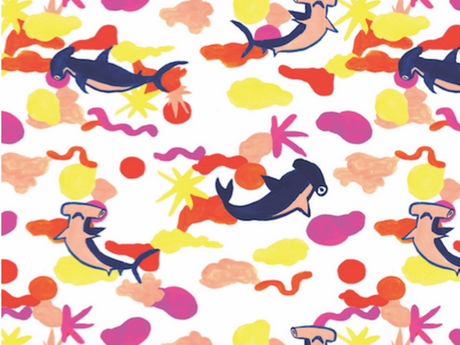Q & A: Chapbook Publishers
Rob Schlegel on The Catenary Press

Rob Schlegel is the author of two books. The Lesser Fields won the Colorado Prize for Poetry, and January Machine won the 2104 Grub Street National Book Prize. His recent work appears in Bennington Review, The Iowa Review, Lana Turner, and Poetry. He is an editor of The Catenary Press.
***
What is your own personal history with chapbooks? How did they first catch your interest?
In college, I made chapbooks and gave them away to family and friends. I loved every part of the process, but especially writing the poems and figuring out how to orient them on the page and then making the paper pass happily through the printer. I also loved designing my own covers with fancy paper from a local office-supply store called Oregon Stationers.
What made you first decide to start publishing chapbooks?
In 2008, Kisha and I were living in Missoula, Montana when we read a sequence of prose poems by our friend, Elisabeth Benjamin. We loved them so much we felt inspired to collect the poems in a book we could hold in our hands and share with others. Houses was our first chapbook. After that we recognized a lack of publishing venues for longer poems and specifically focused on publishing serial poems. Shortly after, we moved to Iowa City, where I met Dan, whose editorial vision is exceptional. A year or so later we were lucky that Rawaan agreed to join us. Dan and Rawaan have been instrumental in the evolution of the press. They've both totally helped shape my understanding of what a poem can be; what a chapbook can be.
Could you talk a little bit about your own process of making and publishing chapbooks?
We read solicited, and, less often, unsolicited work by new and established writers, then share that work with each other. We employ fairly uniform design for each book's interior. The covers, however, are all unique and individually designed by Rawaan, who maintains an uncanny sense of how a cover can inform what's behind it. Rawaan's vision is a major factor in each book's success.
What is unique about the chapbook form, or why chapbooks and not book-books?
One very practical reason is that our hands can actually do the work of sewing chapbooks. The handmade allows us complete control over the design and feel of each finished object, and we're totally committed to making beautiful handheld vessels of exhilarating poetry.
Do you have recent favorite chapbook from another press?
Two personal favorites are Callie Garnett's, Hallelujah, I'm A Bum and Simone White's, Unrest, both published by Ugly Duckling.
More Q & A: Chapbook Publishers
Kit Frick on Black Lawrence Press
I was first introduced to chapbooks in college. One of my first poetry professors, Jeffrey McDaniel at Sarah Lawrence College, brought a few from his personal collection into one of our workshops. What I loved most about chapbooks right from the start was how different and special they all were. Saddle-stitched, perfect bound, glue-gunned and stapled, you name it. They were everything I loved about books: you could tell they were a real collaboration between the author and the press. There was something immediately special about them.
Read ArticleEmmalea Russo and Michael Newton on Ugly Duckling Presse
I interned at the Center for Book Arts and that experience opened me up to all sorts of book making. That moment of—wow—with some pages, an awl, and needle and thread—a book happens. I have been excited about the expanded field of the chapbook ever since. In many ways, the form presents more possibilities for serious play.
Read Article


